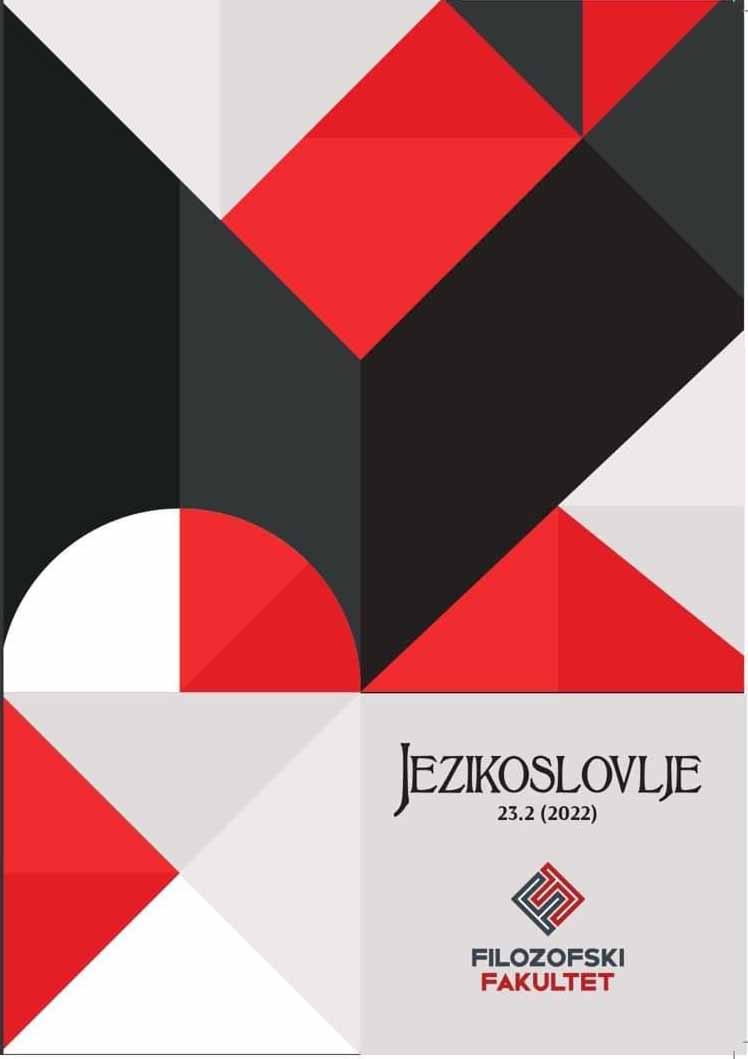Rastavne strukture u hrvatskome crkvenoslavenskom jeziku
DISJUNCTIVE STRUCTURES IN THE CROATIAN CHURCH SLAVONIC LANGUAGE
Author(s): Milan MihaljevićSubject(s): Language and Literature Studies, Theoretical Linguistics, Syntax, Historical Linguistics, Philology
Published by: Filozofski fakultet, Sveučilište Josipa Jurja Strossmayera, Osijek
Keywords: coordination; disjunctive structures; Croatian Church Slavonic language; Croatian Glagolitic texts;
Summary/Abstract: The paper describes the syntax of disjunctive structures in Croatian Glagolitic texts. Disjunctive coordinators are: ali, ili, lûbo and vola. Ordinary two-membered disjunctive structures have only one coordinator located in front of the second coordinand with which it is more closely connected than with the first coordinand. The most common coordinator ili appears in all types of disjunctive structures and can replace all other coordinators. It is, like lûbo, a unit of both the Croatian Church Slavonic and the Old Croatian system. In contrast, the coordinators ali and vola entered the Glagolitic texts from the vernacular, which is confirmed by their distribution and the fact that in this role they are not recorded in canonical Old Church Slavonic texts. Interrogative sentences are connected by disjunctive coordinators ili and ali. The elliptical interrogative constructions in which only the negative particle ne or ni remains of the second coordinand are also interesting from the syntactic point of view. There are three types of such constructions: direct questions with the interrogative particle li in the first coordinand, dependent questions introduced by the conditional conjunction aĉe, and tag questions adjoined to such dependent questions. We also found examples of the so-called metalinguistic disjunction, in which the coordinator is always ili. In correlative disjunctive structures, which have a coordinator also in front of the first coordinand, all earlier mentioned coordinators appear as well as the group aĉe li and their combinations. In Croatian Church Slavonic, as well as in modern Croatian and other Slavic languages, the initial coordinators have only the first coordinand in their scope, from which they cannot be separated. This means that they do not choose a coordinated phrase as a complement and, therefore, correlative coordinations, as well as non-correlative ones, can have an unlimited number of coordinands, unlike the English correlative adverbs both, either and neither which choose a coordination phrase as a complement and, therefore, the coordination is always binary. In multiple non-correlative disjunctive structures, all coordinators except the last one can be omitted, but if the first, second, or any other coordinator is lexicalized, then all coordinators after it must be lexicalized. All coordinators can have other roles. Coordinators ili and ali introduce admirative questions, ali can also be the adversative and rarely a conditional conjunction, and vola and lûbo, with interrogative and relative pronouns and pronominal adverbs, have the role of indefinite particles.
Journal: Jezikoslovlje
- Issue Year: XXIII/2022
- Issue No: 2
- Page Range: 361-375
- Page Count: 15
- Language: Church Slavonic, Croatian

